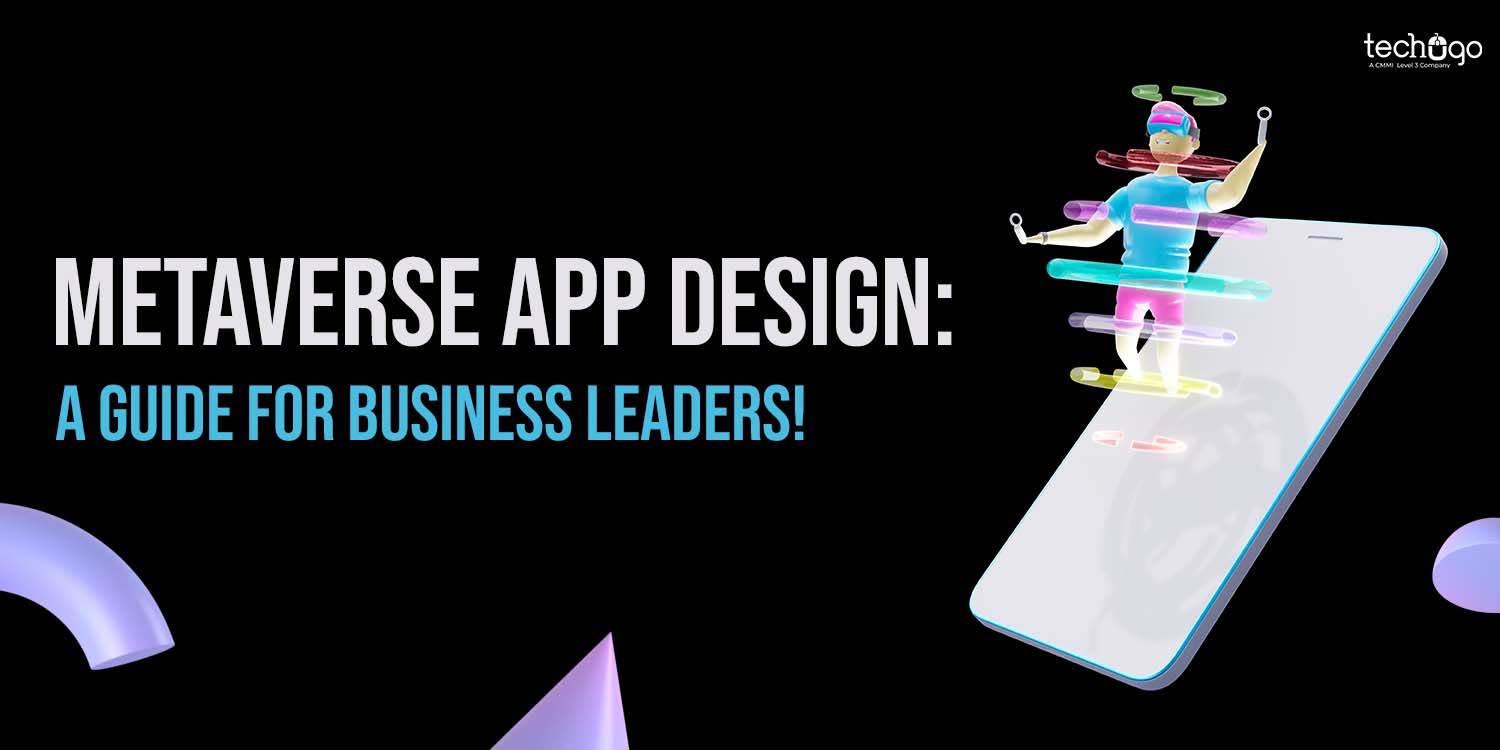Everyone seems obsessed with the metaverse. But it’s more than just a buzzword. It is a technological innovation.
The revolution that began with text, images, and two-dimensional formatting was once a revolutionary way to communicate. Now, it is expanding into new dimensions. Although the metaverse has been around in some form for a while, the advancement of critical technologies has greatly influenced how we use and define the web. Therefore, if you want to be competitive as a business owner in the future, it is important to keep up to date with the latest technologies in this area if you plan to create applications or entire digital worlds for your customers.
Many people believe that the metaverse has great prospects. So they invest more in it. As a result, the global market for this technology will grow from more than $47 million in 2022 to almost $679 trillion by 2030. This is a record-breaking annual growth of more than 39%.
Imagine meeting up with colleagues via 3D avatars or taking a virtual walk with your friends. These and many other day-to-day activities can be done in the metaverse.
Do you want to be part of this expanding industry? This is possible by taking up metaverse application development. Techugo can help you create such products by giving you a step-by-step guide.
What is the difference between Meta App Development and VR App Development?
The metaverse is an online, open, shared, and permanent, three-dimensional virtual world. This virtual world contains many objects and avatars that are real.
Isn’t this virtual reality? Virtual reality is a technology that allows you to create three-dimensional worlds. The metaverse unites all of these worlds into one accessible virtual space.
A metaverse is different from VR because it has other characteristics. Metaverse is a system that uses multiple technologies to ensure its proper operation. Virtual reality is one example of these technologies.
Metaverse application development takes a different approach. The metaverse is a virtual world that exists forever, and interaction with VR ceases after you turn off your computer. However, the metaverse will keep your avatar and other information even after you turn it off. It is, therefore, more fun to create a metaverse application than to use VR technology. Next, we’ll look at the major technologies used in metaverse software creation.
ROLE OF THE BLOCKCHAIN IN THE METAVERSE
Blockchain platforms are a decentralized and global system highly sought after for their use in metaverse projects. Because of the restrictions to information flow, centralized data storage can be problematic in the metaverse. Blockchain can facilitate a fluid flow of information as well as proof of ownership of digital assets. This is why there is a high demand for systems supporting cryptocurrencies and non-fungible tokens.
Today, non-fungible tokens (NFTs) are the best way to create the metaverse economy. Each token is unique and can serve as proof of digital ownership in the blockchain. Users can purchase digital assets and digital real property in-game using non-fungible tokens that grant them the right to own the items.
COMMON MEETAVERSE DEVELOPMENT CODE CASES
Metaverse applications development can be a broad term that encompasses projects in many industries with different levels of complexity. However, these are the most common uses of metaverse development:
- Real Estate. Clients can view the property/apartment from their office.
- eCommerce. Create virtual fitting rooms and sell intangible goods.
- Communication. A workspace platform can be created with digital avatars that allow people to interact.
- Gaming. With the help of real presence, you can create a completely new gaming experience.
- Education. Experiments in virtual space can be used to teach chemistry and physics. You can also teach geography or history by showing events and places in an alternate reality.
Technology Map for Metaverse Development
There are many technologies that power metaverse development. However, innovation is possible only if you understand each and recognize where they overlap.
1. AUGMENTED REALITY (AR) AND VIRTUAL REALITY (VR) IN THE METAVERSE
Although virtual reality is one the most powerful technologies for moving the metaverse forward; it also has its limitations. These are still emerging technologies, so VR isn’t yet widely available. This is due to limited mobility. A specialized Virtual Reality headset is needed to experience the tech. It is bulky and does not allow the necessary head or body movement to share the experience fully. Virtual reality headsets are expensive, and there is no standard for them yet. Content created for one platform might not work for another. AR App Development is where this comes in.
The ‘try before buying’ retail strategy is another way that augmented realities can be used to create immersive experiences. Virtual fitting room technology and similar technologies allow shoppers to try items before making a purchase. IKEA Place is an excellent example of this functionality. It allows shoppers to place virtual furniture inside their homes to get an idea of how it might look before purchasing.
2. ARTIFICIAL INTEREST IN THE METAVERSE
AR and VR are limited technologies in extended reality, but developers can overcome these limitations with another technology. This technology is artificial Intelligence.
AI is the best tool for creating lifelike 3D spaces and delivering more realistic experiences. It can also run complex calculations required for AR face tracking and other tasks. Artificial intelligence can complete these tasks in a much shorter time than humans. In addition, AI-powered systems will be more efficient if they are self-supervised.
3. NATURAL LANGUAGE PROCESSING – NLP
Natural language processing is an essential subset of Artificial Intelligence that is crucial for developing and maintaining the metaverse. This advanced method allows AI to understand and mimic human speech. This will enable users and AI to communicate through chatbots and virtual assistants. It also enables the metaverse easily accessible to diverse groups. Conversational artificial intelligence, for example, allows rich real-time translation of complex sentences, even though it is a difficult task.
It is possible to have a non-monotonic relationship between the target translations and the source speech. This means that words at either end of the speech may influence words at the beginning. Real-time speech translation is impossible because the translator must always verify that the text is consistent with the original speech. Even if it isn’t visible, there will always be a slight delay. To reduce the number of retranslations, advanced algorithms are needed to stabilize the translation of live voice. This is what Google does with its Google Translate.
The internal real-time speech translations can be arranged as follows: the user speaks, then the speech is transformed into text. Finally, the text will be translated into another language. Finally, the text is transformed into speech-to-text technology after the speech has been paused/ended.
NLP can also provide live captions for users with hearing impairments. AI technology, for example, can quickly transcribe a conversation between a group of people. This makes communication in a metaverse app accessible to users with hearing impairments.
Also Read : ChatGPT: A Conversational AI Powered Chatbot May Replace Google Search
4. VIRTUAL ASSISTANT TECHNOLOGY
NLP makes it possible to create digital voice assistants and AI avatars that allow users to make targeted suggestions while also allowing them to operate their devices hands-free. Meta is currently developing a voice assistant for metaverse applications. AI virtual assistants are able to perform language translation, financial administration, and many other functions.
NLP is also used to represent users in the metaverse, either as AI avatars or digital humans. For example, conversational AI allows avatars to understand and process human language and respond to voice commands. In addition, NVIDIA launched the Omniverse Avatar avatar modeling platform last year. This will enable you to create virtual avatars of people that can recognize speech and capture emotions.
5. COMPUTER VISION
Computer vision allows machines to create digital copies of objects, recognize patterns and expressions, and even recognize the moods and emotions of their users.
Control is one of the significant limitations of VR and AR experiences. You can input data into the device using hardware controllers, gloves, or other physical devices. Computer vision can make this experience even more natural through hand tracking. Users can interact more naturally with their devices by recognizing gestures and finger positions.
6. INTERNET OF THE THINGS (IOT) AND THE METAVERSE
Artificial intelligence is only a part and solution to the problems developers face when creating metaverse projects. AI requires high-quality data. That data must come from somewhere. IoT sensors and devices are essential for providing high-quality, real-time data for AI systems.
Digital twins are one of the most valuable applications of IoT within the metaverse. Digital twins are created using IoT sensors. Because VR relies heavily on virtual environments, making a virtual representation using sensors is important.
The metaverse is more than a new digital world. It is the seamless intersection of the digital and real worlds. Metaverse technologies will be revolutionized by the use of augmented reality technologies that integrate IoT sensors with the real world.
Also Read : How To Develop An IoT Application: Features, Benefits, and More!
7. THE BLOCKCHAIN’S PART IN THE METAVERSE
Blockchain platforms are a decentralized and global system highly sought after for their use in metaverse projects. Because of the restrictions to information flow, centralized data storage can be problematic in the metaverse. Blockchain can facilitate a fluid flow of information as well as proof of ownership of digital assets. This is why there is a high demand for systems supporting cryptocurrencies and non-fungible tokens.
Today, non-fungible tokens (NFTs) are the best way to create the metaverse economy. Each token is unique and can serve as proof of digital ownership in the blockchain. Users can purchase digital assets and digital real property in-game using non-fungible tokens that grant them the right to own the items.
8. 5G
Connectivity is essential to fully experience the metaverse. Furthermore, ensuring the delivery of the full virtual experience, we describe in this article is essential. 5G will deliver on that promise and ensure that the metaverse doesn’t lose its offers due to buffering problems and low connections. First, 5G provided ubiquitous access to the metaverse through its consistent coverage and increased data traffic capacity. Secondly, 5G is low in latency and offers a reliable connection that allows XR experiences, regardless of device or geolocation, to be seamless and have instant loads. Finally, 5G promises instant access to all applications within the metaverse, with download speeds of around 100 megabits per sec.
5G is a non-negotiable for metaverse app developers. Apps that interact with the metaverse need to understand the network’s benefits and how to use it. There are many opportunities to develop metaverse apps using the 5G network.
Metaverse App Design- Features to Include
There are many things to take into consideration while metaverse application development. Here are the top features to consider when developing a metaverse app for your business:
1. User Experience
In any application, the user experience is crucial. This is especially true for metaverse business applications where users spend a lot of time. Therefore, it is crucial to design an intuitive, user-friendly interface that is simple to use.
2. Graphics and Immersion
A successful metaverse application requires that graphics be realistic and immersive. This will create a feeling of presence and give users the impression that they are actually in the virtual world.
3. Scalability
When developing a metaverse app, it is crucial to consider scaling. In addition, the application must be able to support large numbers of users. Therefore, using efficient algorithms and data structures that can handle large amounts of data is crucial.
4. Security
Security is an important concern due to the sensitive nature of data stored in metaverse applications. Therefore, it is important to secure user data and prevent unauthorized access.
5. Interoperability
A metaverse application must be capable of interoperating with other services and applications in order to succeed. To ensure compatibility, you should use standard-based interfaces and protocols.
Things to consider before building a metaverse application
Do you need help determining if metaverse development services are right for you? Let’s look at some factors to help you make a decision.
1. The beginning
It can be difficult to create a metaverse platform entirely from scratch. Think about the amount of technology required and how long it will take. Start your journey by joining a virtual world that is already in existence. Only then can you develop your idea into something bigger. This will make the development of the metaverse platform more efficient.
2. Earning Opportunities
First, you can create your metaverse and attract users. You can then offer memberships to them or other monetization options. You can also build your virtual world using existing infrastructure if you have less time and resources. You might also consider investing in crypto or other projects.
3. The Need for Metaverse Creation
First, such a decision cannot be made on the spur of the moment. Indeed, it takes a lot of effort to create a metaverse . Start by doing a thorough analysis of your market, your business, as well as your potential audience. Then, take small steps.
4. Meta Development Stages
We have simplified the process of creating metaverses to just a few steps. These are the steps:
- Create the infrastructure to support the metaverse.
- Define your operational standards for your metaverse.
- Make content for your metaverse.
Stages of the Metaverse App Development
AR technologies are the most cost effective and easiest way to create a metaverse app. They are available to many users. Creating an AR metaverse app can quickly build immersive communication with your audience. These are the steps to create an AR metaverse application.
1. Analyse business
A development team will study your market, competitors, and business details at this stage. This includes brainstorming, discussing ideas with the team, and studying user experience.
2. Concept development and specification preparation
The team and customer work together to identify the best features and create application sections.
3. Design development: User flow, prototype, textures, and object modeling in 2D/3D
This is the stage where the interface for the future program can be created. AR design can be implemented using both 3D visuals as well as 2D elements. It all depends on the project specifications and the team.
4. AR product development (backend, layout)
This includes creating an AR module and its integration into a product.
5. Test, troubleshooting, and customization
The intermediate stages of design development are characterized by testing and verification of work.
6. Publication
Publication of AR products in the App Store or Google Play
7. Technical support
Improvement of the app, adding new functionality. To ensure that the AR product is running smoothly, we monitor the updates to Google and Apple’s operating systems.
The challenges of metaverse application development
In a few years, developing for the metaverse is certain to be the norm. However, metaverse app development is a difficult task because of looming obstacles. These are the most important ones:
1. Interoperability
Remember how we said that the metaverse combines multiple platforms and worlds? The problem is that these “universes” don’t have interoperability or uniformity. You can’t transfer digital possessions, avatars, and other digital items from one metaverse into the next. You can’t use the same avatar you created on Mesh For Teams to Fortnite. You can’t transfer a Roblox building to another digital realm. Interoperability is essential for the metaverse’s future success. There are many obstacles to overcome. But, hopefully, the metaverse app developers in the future will be able to rise above these and make the metaverse the best it can be.
2. Security
There is no metaverse police. It can be difficult to verify identity in metaverse environments. Identifying someone is easy in the real world. In the virtual world, however, it is possible to impersonate anyone. Hackers can impersonate others and cause damage to other users’ integrity. Metaverse interactions rely heavily on AR and VR gadgets. These devices lack security protocols that can block attacks and could create access points for intruders to the networks and systems where they function. These are the most important issues for developers of metaverse apps.
3. Legal issues
The metaverse has some freedom, but it can be difficult to circumvent intellectual property rights in certain situations. This digital world is open to virtual images and performances, and there is no way to protect intellectual property rights.
Metaverse app Development: The final word
The first episode of the metaverse is now complete. It is still in its early stages and still evolving. We are already witnessing exceptional metaverse applications that has set the standard high. What’s next? Virtual gaming, 3D marketplaces, social media platforms, and blockchain-based trading are all becoming more common in today’s digital world. Metaverse apps are likely to become the norm. It’s why it’s so important for the app industry to keep an eye on the metaverse. It’s not easy, and many developers aren’t prepared for the future, but it is crucial that we start preparing. The metaverse will disrupt our industry sooner than we think, and it’s up to us to set the pace for future success and adoption of metaverse apps.
Even though we are far from an integrated metaverse universe, many development companies still have the opportunity to learn, experiment, and explore metaverse-related content and tools. As a result, many development methods will be obsolete, but others will evolve. How we adapt to these learning experiences can make the difference in developing metaverse apps that work and what our success rates are.
Don’t think twice before contacting with us if you have any queries!
Post Views: 3,053




 SA
SA
 KW
KW
 IE
IE AU
AU UAE
UAE UK
UK USA
USA
 CA
CA DE
DE
 QA
QA ZA
ZA
 BH
BH NL
NL
 MU
MU FR
FR

























